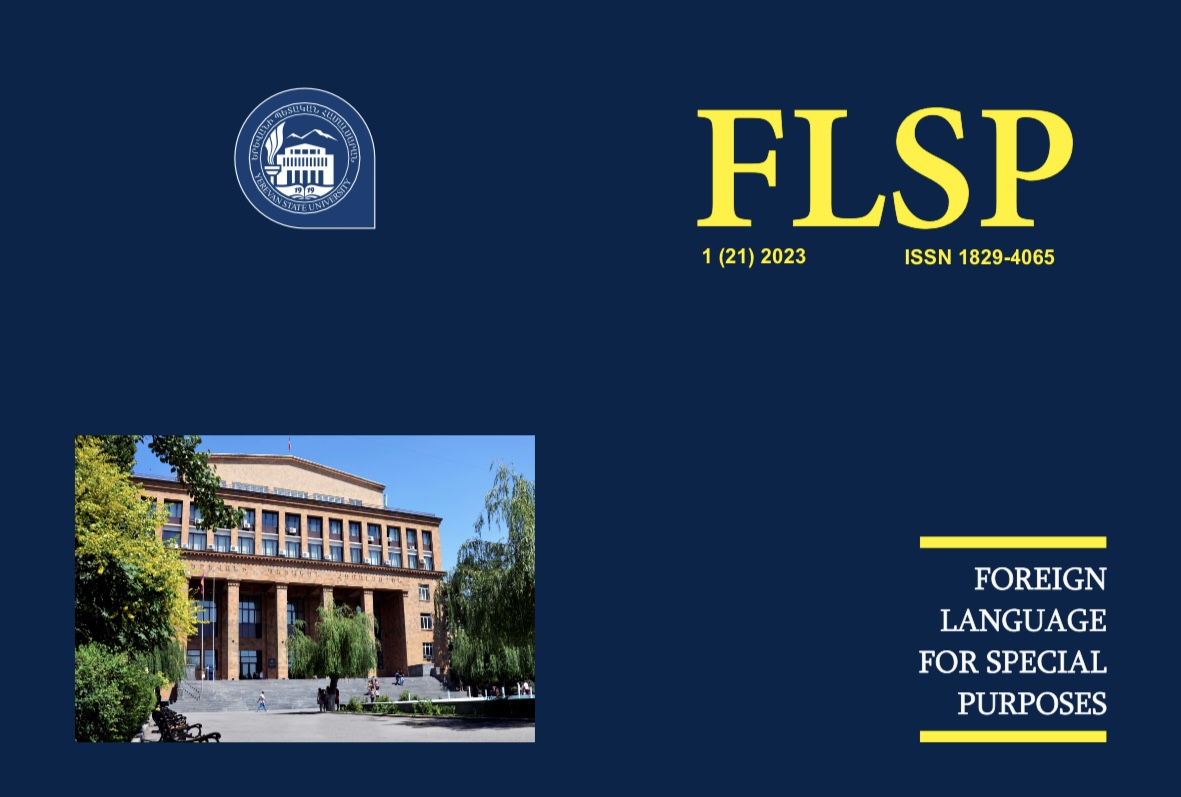Vectorality as a functional side of the Media language in the era of digitalization
DOI:
https://doi.org/10.46991/flsp.v21i1.10659Keywords:
Vector, international communication, media language, media linguistics, globalization, digitalizationAbstract
This article is devoted to the relevance of studying the vector development of the language of mass media against the background of globalization and digitalization of modern society. The relevance of this study is dictated by the possibility of correcting a person's perception of information in the process of acquiring the necessary knowledge when interacting with foreign language sources, taking into account his cognitive abilities. The focus is on the implementation of the functional side of the media language. A special place in the study is occupied by the use of certain cognitive and communicative-speech strategies of the author / recipient in the process of generation and transmission, as well as the perception of the text, respectively, i.e. the establishment and use of a certain vector taking into account the communicative-pragmatic and psychological openness of the text. The vector approach will help to minimize the risks associated with the distortion of the original information. The main feature of the vector is that it represents a certain structure, including linguistic consciousness, a kind of model not only of cognition, but also of verbalization of what is happening in the surrounding world.
References
Апресян Ю. Д. (1995) Избранные труды. Интегральное описание языка и системная лексикография. М. : Школа «Языки русской культуры», Т 2. 767 с.
Володина М.Н. (2000) От редактора // Программы курсов по специализации «Язык средств массовой информации». – М., – С. 3–4
Добросклонская Т.Г. (2005) Вопросы изучения медиатекстов: Опыт исслед. соврем. англ.
медиаречи. – 2 изд. – М., – 288 с.
Залевская А. А. (2005) Психолингвистические исследования. Слово. Текст. Избранные труды. М. : Гнозис, 543 с.
Кара-Мурза Е.С.(2005) [Рец. на кн.:] Язык СМИ как объект междисциплинарного исследования: Учеб. пособие / Отв. ред. Володина М.Н. – М., 2004. – Ч. 2 // Вестн. МГУ. Сер. 9, Филология. – М., – № 3. – С. 188–195.
Леонтьев А.А. (2003) Психолингвистические особенности языка СМИ // Язык СМИ как объект междисциплинарного исследования: Учеб. пособие. – М., – С. 66–88.
Липгарт А.А. (2003) К проблеме языковедческого описания публицистического функционального стиля // Язык СМИ как объект междисциплинарного исследования: Учеб. пособие. – М. – С. 161–166.
Сметанина С.И. (2002) Медиатекст в системе культуры: (Динамич. процессы в яз. и стиле журналистики конца ХХ в.). – СПб., – 383 с.
С.Г. Тер-Минасова (2000) Язык и межкультурная коммуникация : Учеб. пособие для студентов, аспирантов и соискателей по специальности "Лингвистика и межкультур. коммуникация" / С. Г. Тер-Минасова. - Москва : Слово/Slovo, - 261, [1] с. : 14 c
Чернявская В.Е. (2003) Интертекстуальность и интердискурсивность// Текст-Дискурс-Стиль.-Спб.
Шкуратова И.П. (1994) Когнитивный стиль общение. - Ростов-н/Д.: Изд-во РГПУ
Юдина Т.В. (2003) Универсальные и специфические характеристики Интернета как формы
коммуникации // Язык СМИ как объект междисциплинарного исследования: Учеб. пособие. – М., – С. 401–407
Downloads
Published
Issue
Section
License
Copyright (c) 2023 Nadeshda Shiryaeva

This work is licensed under a Creative Commons Attribution-NonCommercial 4.0 International License.
Creative Commons Attribution-Non-Commercial (CC BY-NC). CC BY-NC allows users to copy and distribute the article, provided this is not done for commercial purposes. The users may adapt – remix, transform, and build upon the material giving appropriate credit, providing a link to the license. The full details of the license are available at https://creativecommons.org/licenses/by-nc/4.0/

